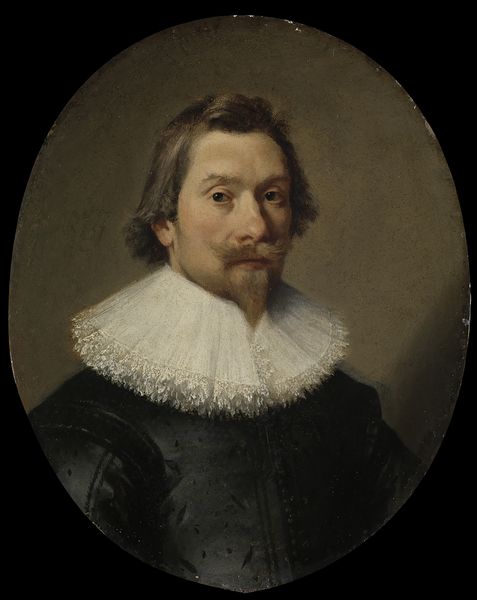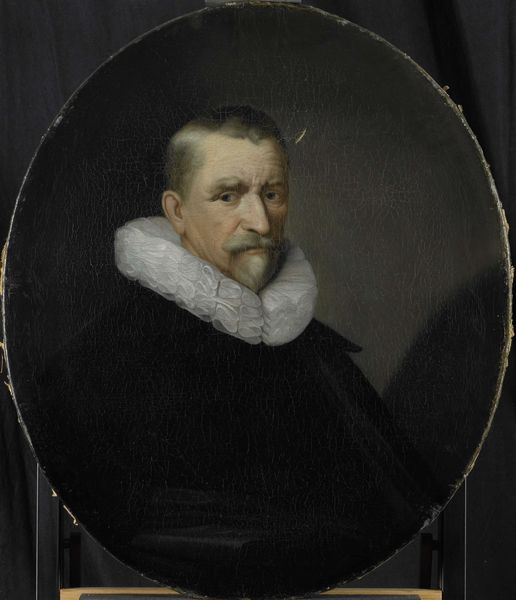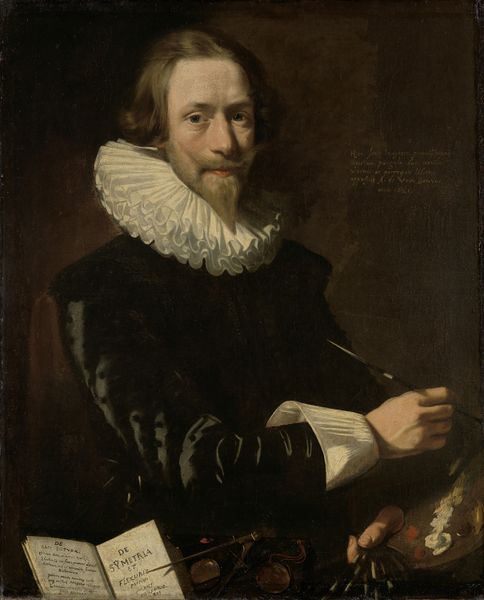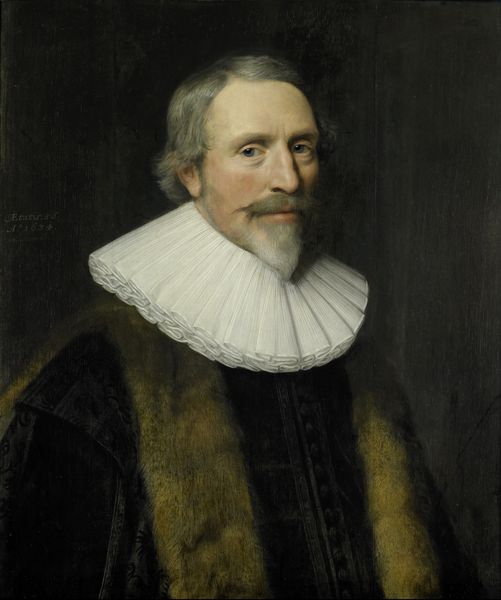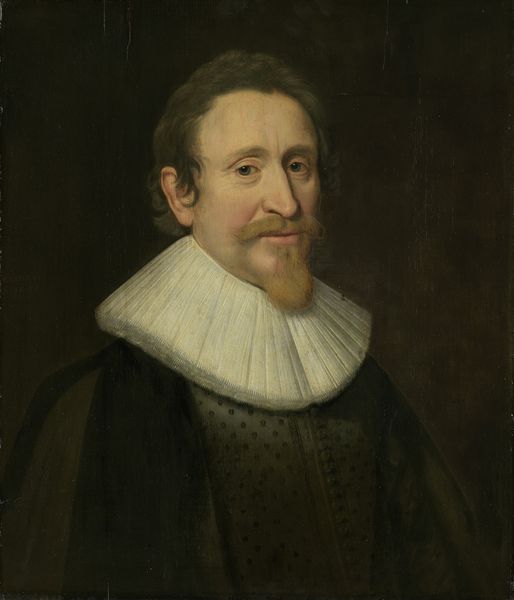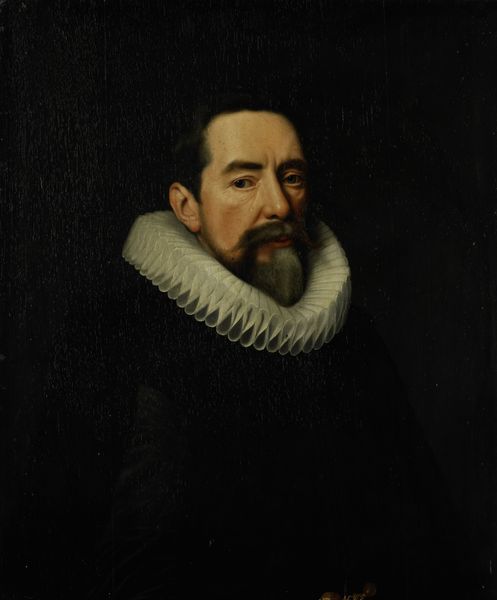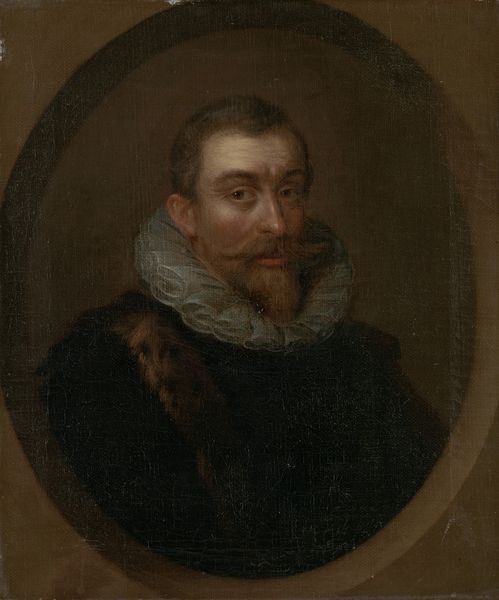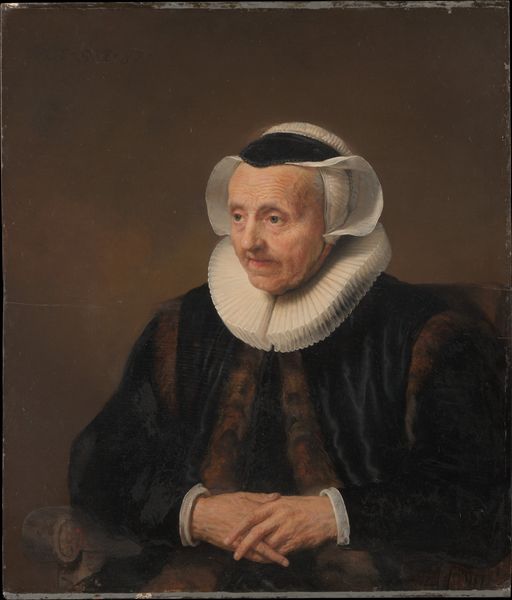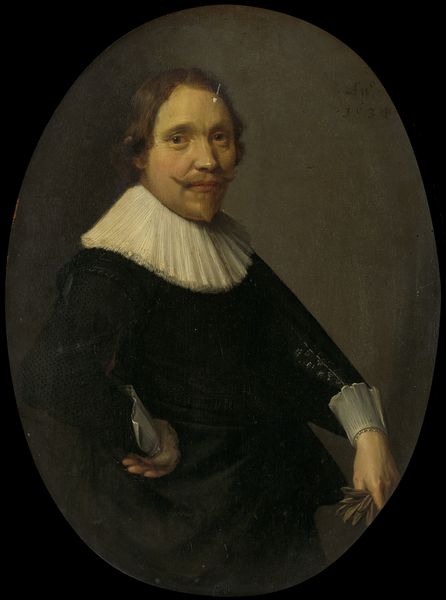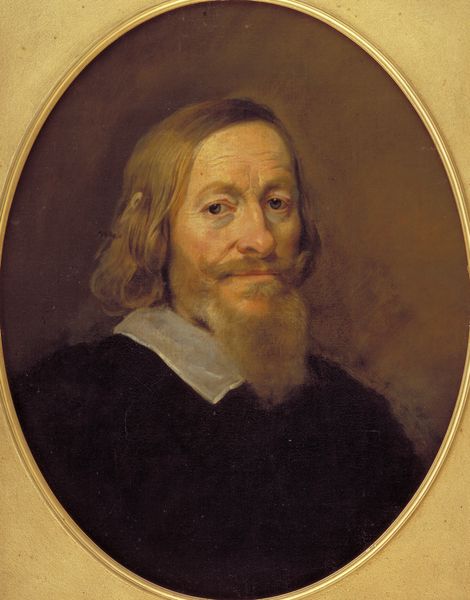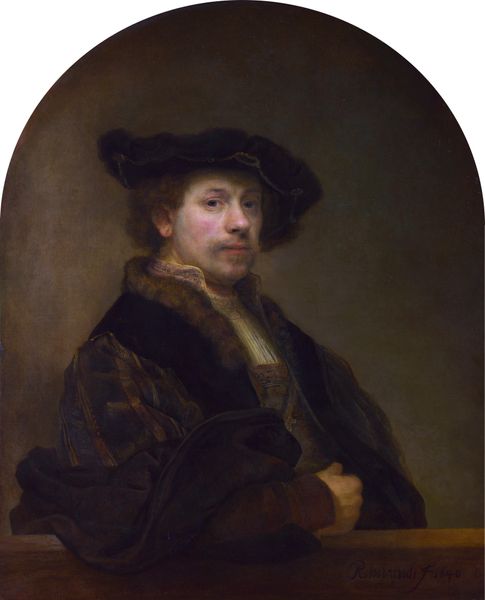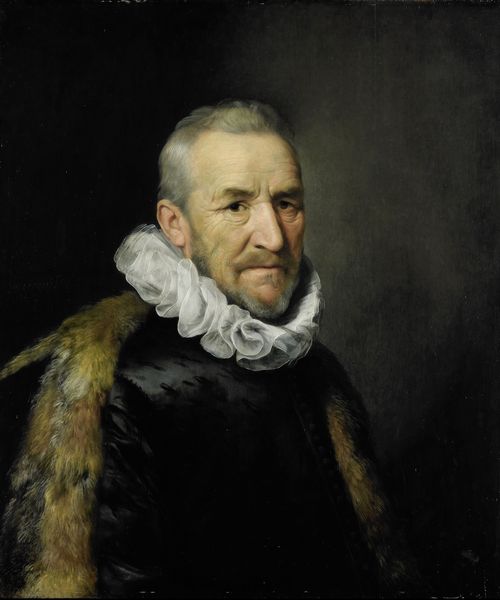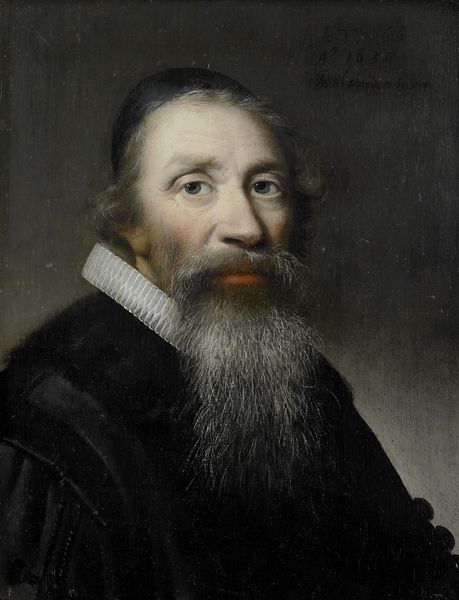
#
portrait image
#
portrait
#
male portrait
#
portrait reference
#
portrait head and shoulder
#
animal portrait
#
portrait drawing
#
facial portrait
#
fine art portrait
#
digital portrait
Dimensions: support height 71.5 cm, support width 61 cm, outer size depth 5.5 cm
Copyright: Rijks Museum: Open Domain
Curator: We’re looking now at Abraham de Vries' “Portrait of David de Moor,” painted around 1640. It's part of the Rijksmuseum collection, and immediately strikes me as having a somber kind of gravity. Editor: Oh, definitely! The deep, almost enveloping darkness is intense. It makes the sitter's face seem to emerge from the shadows, like a memory surfacing. I immediately wonder what kind of presence De Moor held. Curator: Right. De Vries uses that darkness to great effect. The portrait isolates the subject, forcing you to concentrate on the details of his face and that fantastic ruff. It’s an incredible study in contrasts; the dark clothing against the luminosity of the face and collar is mesmerizing. Editor: And speaking of that collar, it's an architectural marvel, isn't it? So precisely rendered it's practically sculptural. I see a deliberate use of line and texture there – a means of conveying status, formality and control through dress. How do you think that rigid form influences our perception of De Moor? Curator: I think it's essential to his character in the painting. The man himself almost seems softened somehow by his own fragility; his expression contains melancholy or pensiveness beyond the usual subject of this era of portraiture. De Vries is really telling us something with the interplay of stiffness and emotion, a peek behind the lace. Editor: A poignant assessment. The details, the meticulous brushwork in rendering skin tones, combined with the dark setting do invite the viewer to lean in. Is it the man who dominates or is the darkness overwhelming his presence? Is it more about revealing or concealing identity? Curator: Maybe it's both, at once. This painting suggests that De Moor exists not as a statement of personal wealth, but rather in a very thoughtful state – almost an apology for a privilege only afforded by social stature during such times. Editor: Interesting, that shadow then could almost be the embodiment of the historical realities surrounding such men! I see now a beautiful conversation between the aesthetic form and deeper meaning here. Curator: Absolutely, Abraham de Vries definitely crafted a complex and thought-provoking work, prompting many different ways to contemplate his subject, literally. Editor: Well said. It’s easy to see why it continues to draw us in, inviting questions far beyond its time.
Comments
No comments
Be the first to comment and join the conversation on the ultimate creative platform.
